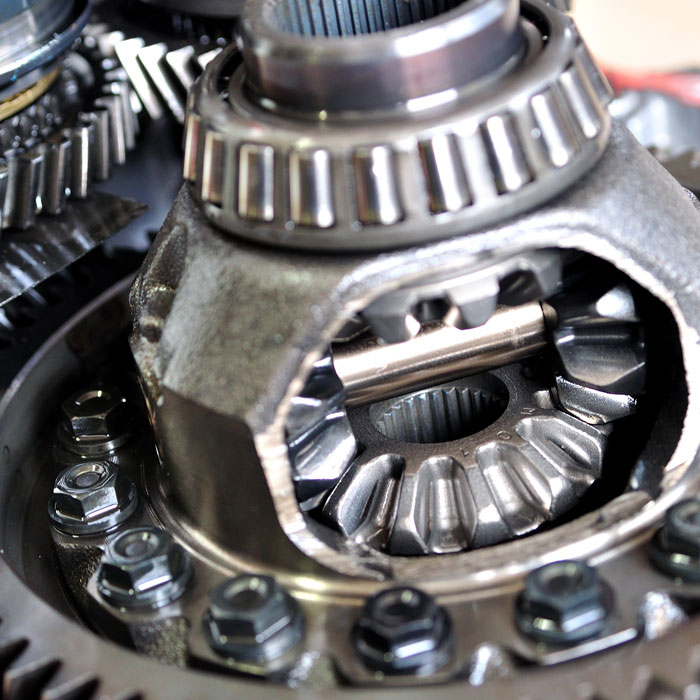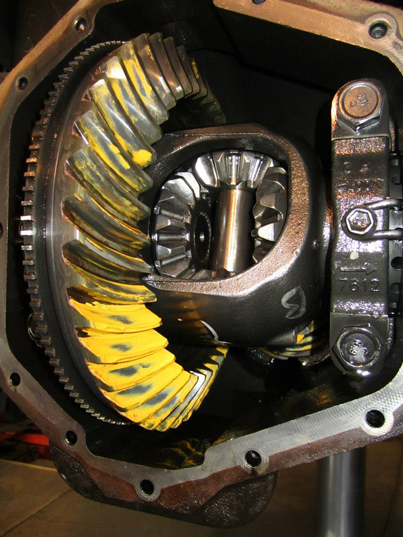How to Repair a Differential
To repair a differential, first, raise the vehicle, remove the cover, drain the fluid, inspect gears for damage. Replace any worn components, refill with correct fluid, and test drive to ensure proper functionality.
Repairing a differential is crucial for the proper functioning of a vehicle’s drivetrain system. A differential helps distribute power evenly to each wheel, allowing for smooth turns and efficient driving. When a differential malfunctions, it can lead to issues such as strange noises, vibrations, or difficulty turning corners.
Therefore, performing regular maintenance and promptly addressing any issues with the differential can prevent major repairs and ensure the vehicle operates smoothly on the road.

Credit: www.caseystire.com
Understanding The Differential
The differential is an essential component of a vehicle’s drivetrain system that allows the wheels to rotate at different speeds during turns. It serves a crucial function in distributing torque to the wheels and ensuring smooth and controlled movement. To repair a differential, it is important to have a clear understanding of its role and the different types available.
Differential Function
- The differential’s primary function is to distribute torque between the wheels, allowing them to rotate at varying speeds when the vehicle is turning.
- It compensates for the difference in distances traveled by the inner and outer wheels during a turn, ensuring smooth and uninterrupted power delivery.
- This ability to distribute torque helps improve traction and handling, especially on uneven or slippery surfaces.
- Without a properly functioning differential, the wheels would experience binding or scuffing, leading to excessive tire wear, increased stress on other drivetrain components, and a compromised driving experience.
Types Of Differentials
| Type | Description |
|---|---|
| Open Differential | An open differential is the most basic type that allows the wheels to rotate at different speeds independently. It evenly distributes torque between the wheels but does not provide any torque biasing, limiting its performance on slippery surfaces. |
| Limited Slip Differential (LSD) | A limited slip differential improves traction by transferring torque to the wheel with more grip. It uses various mechanisms, such as clutch packs, viscous couplings, or helical gears, to achieve torque biasing. |
| Torsen Differential | A Torsen (Torque Sensing) differential is a type of LSD that uses a mechanical worm-gear system to distribute torque. It provides excellent torque biasing without requiring external mechanisms. |
| Electronic Limited Slip Differential (ELSD) | An ELSD is a modern type of LSD that utilizes electronic sensors and actuators to control torque distribution. It offers precise and rapid adjustments to maximize traction. |
Knowing the type of differential in your vehicle is crucial in understanding the repair process. Whether it’s repairing or replacing worn-out components, adjusting the gear mesh, or addressing leaks, a thorough understanding of the differential and its inner workings will help ensure a successful repair.
Diagnosing Differential Issues
Symptoms Of Differential Problems
1. Strange noises during turns like whining or clunking
2. Vehicle experiencing vibrations, especially at high speeds
3. Leaking fluid from the differential housing
4. Uneven tire wear or abnormal tire damage
Inspection And Testing
- 1. Lift the vehicle to inspect the differential housing
- 2. Check for any signs of leaks or damaged components
- 3. Perform a road test to identify any drivability issues
- 4. Use a diagnostic scan tool for error code readings
Repairing The Differential
To successfully repair a differential, it is essential to follow a systematic approach that includes preparation, disassembly, inspection of components, part replacement, and reassembly. This comprehensive process ensures that the differential functions effectively and prolongs the lifespan of your vehicle.
Preparation And Safety Measures
- Ensure the vehicle is parked on a level surface.
- Wear appropriate safety gear, including gloves and eye protection.
- Have all necessary tools and replacement parts on hand.
Disassembly And Component Inspection
Begin by removing the differential cover and draining the fluid. Inspect the gears, bearings, and seals for signs of wear or damage.
Replacement Of Parts
If any components show wear, replace them with new parts to ensure optimal performance. This may include gears, bearings, or seals.
Reassembly And Testing
- Clean all parts thoroughly before reassembly.
- Follow the reverse process of disassembly to reassemble the differential.
- Refill the differential with the appropriate fluid.
- Test the vehicle to ensure the differential functions correctly.

Credit: dabneysalignmentandbrake.com
Choosing The Right Tools And Parts
Maintenance And Care Tips
Proper maintenance and care are essential for ensuring the longevity and smooth operation of your differential. By implementing regular inspections and adhering to a fluid replacement schedule, you can significantly extend the lifespan of your differential components. Let’s delve into the specific maintenance and care tips to keep your differential in top shape.
Regular Differential Inspections
Regularly inspecting your differential allows you to identify any potential issues early on, preventing more significant damage and costly repairs. Inspect the differential housing for any signs of leaks, cracks, or damaged seals. Pay close attention to the differential fluid level and condition, as low levels or dirty fluid can indicate a problem. Additionally, examine the differential mounts and bolts for signs of wear or looseness. Thoroughly inspecting these components during routine maintenance can help you catch issues before they escalate.
Fluid Replacement Schedule
Maintaining a consistent fluid replacement schedule is crucial for preserving the integrity of your differential. Regular fluid changes promote proper lubrication and cooling, preventing excessive wear and tear. Refer to your vehicle’s manual or consult with a professional to determine the ideal replacement interval for your specific differential. When replacing the fluid, ensure you utilize the manufacturer-recommended gear oil to maintain optimal performance and protection for your differential components. Adhering to a strict fluid replacement schedule will promote the overall health of your differential.

Credit: m.youtube.com
Frequently Asked Questions Of How To Repair A Differential
Can You Fix A Broken Differential?
Yes, a broken differential can be fixed through professional repair and replacement services. Regular maintenance and inspections can prevent issues.
Is It Expensive To Fix A Differential?
Fixing a differential can be expensive, with costs varying depending on the extent of the damage and the type of vehicle. It is advisable to consult a professional mechanic for an accurate assessment of the cost. Keep in mind that regular maintenance and addressing issues promptly can help prevent costly repairs in the long run.
Can You Drive With A Bad Differential?
Driving with a bad differential can cause further damage, leading to safety hazards. It’s best to get it fixed immediately to avoid costly repairs and ensure safe driving.
Is It Easy To Rebuild A Differential?
Rebuilding a differential can be challenging without proper experience and tools. Seek professional help for the best results.
How Do I Know If My Differential Needs Repair?
To identify if your differential needs repair, look for leaks, whining sounds, or unusual vibrations.
What Causes Differential Damage?
Differential damage can occur due to lack of lubrication, worn-out gears, or excessive load on the vehicle.
Is It Safe To Drive With A Damaged Differential?
Driving with a damaged differential is not safe as it can lead to further mechanical issues and potential accidents.
Conclusion
Successfully repairing a differential requires knowledge of its components, careful diagnosis, and proper handling of tools. By following the step-by-step guide provided in this blog post, you can effectively address issues with your differential and restore optimal performance to your vehicle.
Regular maintenance and attention to warning signs can also help prevent major differential problems in the future. Happy repairing!
